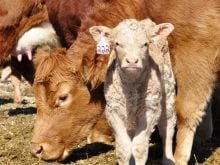The market saw fluctuations because production didn’t decline as much as expected but ended the year higher overall
REGINA — It was a good year to be a cattle producer.
Prices fluctuated at times in 2024 but moved overall higher as the year progressed.
Brenna Grant, executive director at Canfax, said demand has remained steady and producers have benefitted. Cow-calf producers have had the leverage at this point in the cattle cycle.
Read Also

Short rapeseed crop may put China in a bind
Industry thinks China’s rapeseed crop is way smaller than the official government estimate. The country’s canola imports will also be down, so there will be a lot of unmet demand.
“Alberta steer calf prices have rallied 25 per cent, or $500 per head, between January and December,” she said.
“Alberta fed steer prices have rallied 16 per cent.”
Grant said these are new record high prices nominally.
“But really, over the last 25 years, the beef industry has really struggled to just keep up with inflation,” she said.
Ten years ago the industry caught up to inflation and then dropped back again.
Cow prices in 2024 have been just barely keeping up to inflation, but fed cattle prices are still lagging behind, she said.
“It means that we are expecting further price increases,” Grant said.
Some of the price volatility occurred because production didn’t decline as much as originally expected. Carcass weights in North America remained high.
“What really has supported these prices is the fact that we’ve continued to see really strong retail beef demand,” she said.
Demand was steady through the year both domestically and internationally, even in the face of rising consumer prices.
Grant said it’s important to remember an additional 2.4 million people have come to Canada in the last two years.
“Research indicates that immigrants often experience dietary changes after relocating, and it’s known as dietary acculturation. The process involves retention of that traditional dietary behaviour while incorporating new foods and eating habits,” she said.
While they might not be eating as much beef as other Canadians, they are adding it to their diets.
The smaller calf crop during the fall run also supported price competitiveness.
Cattle herds peaked in both Canada and the United States in 2020, before the drought. May rains helped stem cow marketing, and year-to-date cow slaughter is down 20 per cent, Grant said.
Slower cow marketing is the first step to stopping liquidation, she said, but keeping them puts producers into a consolidation phase.
Historically, in a 10- to 12-year cattle cycle, there are three years of consolidation before expansion.
“We’re seeing interest by cow-calf producers to retain heifers. They’re definitely getting the price signal to do that, but this really comes down to weather and if they have rain to retain those heifers,” Grant said.
She also said some of the economic and political uncertainty in the United States is affecting beef markets, particularly the strikes at east coast ports.
Resolution of those work disputes in the fall was delayed into January and could still cause problems. Port strikes, rail strikes and other events that disrupt supply chains create volatility.
The threat of 25 per cent tariffs on Canadian goods into the U.S. by president-elect Donald Trump is still uncertain, but all sectors are waiting and watching.
The U.S. Department of Agriculture predicts higher prices on lower expected slaughter.
A December report said the discovery of new world screwworm in cattle from Mexico and the subsequent import ban will limit available slaughter cattle into the second quarter of 2025.
As a result, 2025 beef production is forecast 615 million pounds lower at 25.7 billion lb.
The USDA said slaughter prices are expected to increase more than two per cent year over year, while feeder steers should increase eight per cent.
In Canada in 2025, Grant said the main thing to remember is that cattle numbers are tightening.
“That trend is going to continue into 2025, and those tighter supplies are going to be supportive to prices, but we can absolutely expect volatility as the markets react to any news around consumer demand and/or any political announcements,” she said.
















